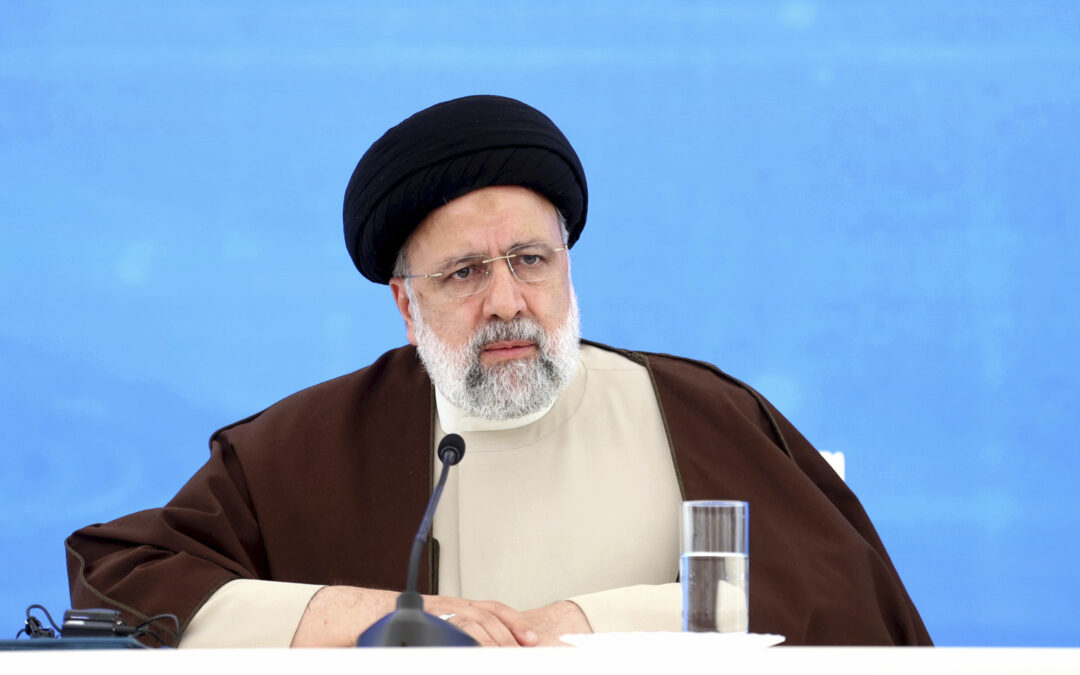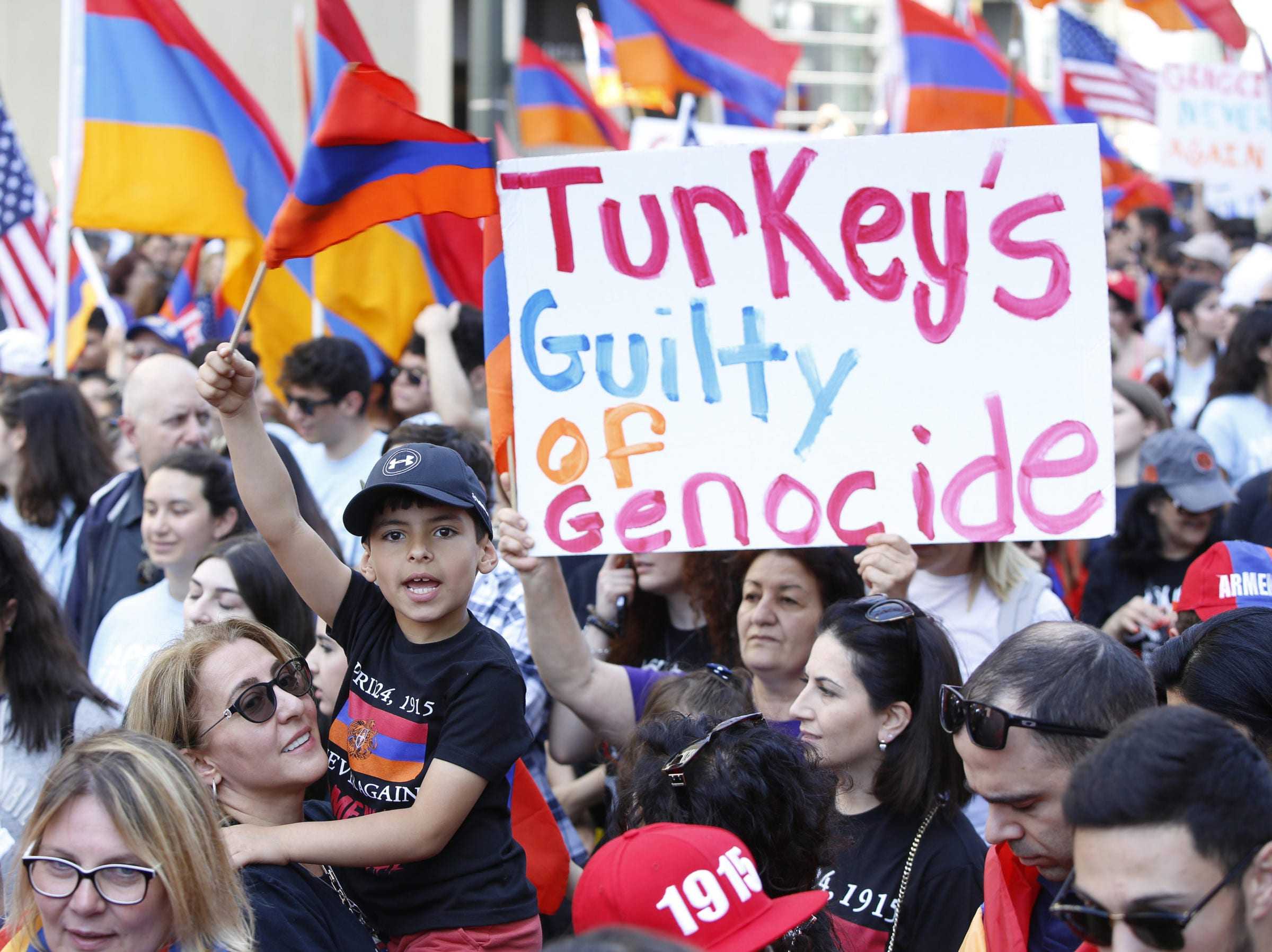By JON GAMBRELL Associated Press DUBAI, United Arab Emirates (AP) — A helicopter carrying Iranian President Ebrahim Raisi suffered a "hard...

Global News Through a Greek Lens
Global News Through a Greek Lens


By Ümit Kurt, Ahval
The Armenians of the Ottoman Empire experienced calamity of the greatest degree during World War I. Many males, including young men and boys, were executed outright, whilst women, children and the elderly were deported to barren lands in Iraq and Syria.
Those deported were subjected to every manner of misery – kidnapping, rape, torture, murder and death from exposure, starvation and thirst – by every possible adversary – Ottoman gendarmes, Turkish and Kurdish irregulars, tribesmen, and the army.
Those who escaped deportation, primarily women and children, were forced to convert to Islam, as Muslim identity was considered a cornerstone of the new nation-state, Turkey. Principally perpetrated by the Committee of Union and Progress (CUP, İttihad ve Terakki Cemiyeti) elite, who largely controlled the Ottoman government at the time, these events constitute what we now know as the Armenian Genocide.

“I like Armenians very much, but that was a case of deportation (tehcir). An incident that took place during a war. It is difficult to call what happened during the war genocide. We did not begin butchering them out of the blue, as was done to the Jews.”
This horrifying and commonplace racist remark was uttered by the Turkish novelist Ayşe Kulin in 2014. This article will dissect Kulin’s bigoted and familiar discourse and attempt to reveal the components of her words. I’ll also consider the impact of a particular kind of empirical way of “doing history” and how this impacts the way Turkey confronts the past.
While many things have changed in Turkey, there are a few things that have not. Namely, us Turks, who maintain the right to exterminate, and the Armenians, who have been dealt the card of being massacred whilst being expected to contend with this reality.
Today, there still exists the notion of Turkishness, based on the “dominant nation” (millet-i hakime) doctrine, which sees other non-Turkish peoples only as beings to be tolerated as long as they accept the sovereignty of Turks, who maintain, by birth, the right to massacre. Moreover, these others are traitors who perpetually stab the dominant nation in the back.
This reality has always been the case, including for the likes of Talat and Enver pashas, as well as Halil Menteşe (Minister of Foreign Affairs of the CUP government) and Dr Mehmed Reşit (notorious governor of the Diyarbakır province). They too, just as Kulin subconsciously exposed, in memoirs and their own defence claimed that they did not “obliterate Armenians out of the blue”.
Kulin’s racist statements actually revealed, once again, very clearly the attributes of Turkey’s culture, or lack thereof, of facing and reckoning with the past.
The “we” that Kulin is part of maintains the trait of always looking to blame the victim and continuously allowing for its own role as perpetrator to be questioned. All this effort is built around the construction of the sentiment “us” within the notion of Turkishness.
Being part of “us” has been reduced to a matter of being Turkish, of ethnicity, lineage and roots.
Here it must also be highlighted that there is a hypocritical attitude prevalent in Turkish society on this matter. This includes intellectuals that represent society with the exception of a few who have confronted this issue in a moral and conscientious fashion.
What I mean by hypocrisy is that despite hearing stories from their elders on what happened to Armenians and comprehending that this was a complete annihilation based on said stories, for the people of Turkey this remains an issue that is not easily disclosed in the public sphere. Such an attitude is complicity in a crime against humanity and a concealing of this genocide.
The attitude as expressed by Kulin – “I didn’t exist during the massacres of the Armenians, why am I being held accountable or expected to apologise for a crime that I was not involved in” – is an approach that is problematic and avoids confronting history.
Those who committed this crime, the political actors and cadres who made the decision to decimate a population, asserted that they committed this act for Turkish society and the future of the Turkish state. Kulin’s racist statement effectively conditions the existence of Turks to the absence of Armenians. This outlook forever keeps Armenians in a state of victimhood.
Such outlooks on the events of 1915, this failure to face the issue or outright denial, unfortunately continually keeps alive the possibility that such a tragedy can reoccur. In other words, both Turks and Armenians are, in essence, victims.
The former is in a complete state of compression due to the fact that they are unable to develop the courage to face and hold to account their history, and their minds are in a state of disarray because of an indoctrination perpetuated by an ideology-laden educational system that supports this view.
The latter, due to the attitude of the former, continues to carry the same victim mentality of their grandparents, living in a state of fear that they may experience the same fate.
Armenians during the early 20th century lived throughout Anatolia alongside Muslims in a state of relative harmony. They maintained good neighbourly relations, but these ties were never founded on the equality of the two sides.
Armenians knew that they were not the “fundamental component”, so to speak, of the country in which they lived. Turks were the dominant nation and Armenians could only establish relations with them in ways that they desired. As such, there was always an enduring asymmetry, which formed the basis of a social contract between the two sides.
However, this conditional accord and neighbourliness was damaged by factors such as political and economic crises, Ottoman loss of land and Armenian demands for reform. It is impossible not to recall within this context a conversation that is said to have taken place between Vartkes Serengulian, a member of the Ottoman Parliament, and Talat Pasha, infamously known as the mastermind of the Armenian genocide.
Armenians had turned to the West for assistance with reforms and following lengthy diplomatic talks, the February 1914 Reform Agreement was signed. CUP authorities and politicians were angered by having signed this pact.
Talat Pasha would express his sentiments by saying, “You encroached on us at a time when we were weak and brought forth the Armenian Reforms. As such, we too will use the means afforded to us by our situation and disperse your population to such a degree that the idea of reform will abandon you for fifty years.” Vartkes asked if the work of Abdülhamid would be continued, to which Talat responded with a “yes”.
Indeed, in May 1895, foreign powers presented the Armenian Reform Bill, which was initially met with resistance from Sultan Abdülhamid before he was eventually forced to announce the Armenian Reform Package in October 1895.
The response to the compulsorily accepted reform was the massacre of around 100,000 Armenians. Is the similarity here to 1915 not surprising?

In some societies, history and the present have become intertwined and this has led to a loss of a sense of reality. The absence of this sense of reality, which has spread throughout Turkey’s social and political culture, is felt most in connection to the Armenian issue.
On that, it is possible to say that Turkey’s skittishness and almost Kafkaesque fears have become further entrenched by the layers of forgetfulness brought on by our political and social history.
Even a rough stocktaking of events will give you sufficient information about the layers of forgetfulness. These are events over which sufficient thought has not been exercised over reasons and results; courage has not been displayed in facing pain and fear; dialogue has not been established with those who have been victimised and victims have been avoided.
If we were to take this as a starting point that led to the establishment of the Turkish Republic, then surely, we must place the sequence of events presented as the Armenian deportation at the very fore.
That is to say, the public, official and national historical narrative expects us to accept the Turkish historical thesis surrounding the Armenian problem, one of Turkey’s most controversial issues, without any questions or attempts to break through thick walls.
We are also expected to accept the subsequent absolute denial, from the cradle to the grave, the term “Armenian Genocide”.

Of course, it entails an arduous effort to conduct serious research into or document the acts that Armenians, as official citizens of the Ottoman Empire, were subjected to in 1915 in a way that grasps the dimensions, stages, consistencies and disengagements of the era.
This requires constant effort, a healthy and critical outlook and a conscience that allows historical events to be viewed in a way that avoids ideological and political motivations.
What I mean here is an objective approach towards events and truths, moreover, when filtering these through the prism of intellect, avoiding falling victim to the scientific-positivist mechanics of impartiality and the power of discourse that it creates. The era at hand, while remaining in a historical plane, is ripe for different historical narrations and perspectives.
The limitations posed by focusing on a single type of document and the soaring number of moulds showcasing how that document should be utilised, is causing emerging professional historians to operate within a very narrow framework.
“Document-information historiography,” is a term used to describe classical era Ottoman historians by historian Oktay Özel, can also be used in reference to historical works linked to the Armenian issue. Maintaining this reflex as a historian requires carrying out work on both domestic and international platforms, utilising standards during a time in which historiography and historical narration is undergoing a serious transformation based on an expansive wealth of culture and knowledge, with an understanding of archives and archival documents and openness to the different disciplines of social sciences. It means being a historian who can conduct theory-based history on the foundation of empiricism.
To this end, a subject like the Armenian issue, which among historians is defined as being a hazardous field, should be addressed in a way that does not overlook any of the political, cultural, economic or historical processes that affected the era. It should be addressed in the conceptual and theoretical sphere, within a framework that does not relegate itself purely to the conformity of mechanical-functional document reading or information presenting. These are naturally parameters that point to the need for a serious paradigm shift in Turkey’s understanding of historiography.
I must also point out that it is absolutely necessary to move leaps and bounds beyond the understanding of academic historiography, positivist objectivity and scientific mechanics. In doing so we underline the importance of real life and the effects of political, social and ideological acts on the actors of this real life. The narration of all of this in a perfectly explicit language reveals one’s stance and the information looking to be conveyed. In short, it is imperative that the historian’s perspective does not remain shackled by the grip of documentation-based historiography.
(A version of this article was originally published on the Wiener Holocaust Library